|
|
|
Sort Order |
|
|
|
Items / Page
|
|
|
|
|
|
|
| Srl | Item |
| 1 |
ID:
193067


|
|
|
|
|
| Summary/Abstract |
Can the presence of international organizations reduce civilian deaths caused by aerial bombing? This commentary examines this question in the specific context of the U.S.-led war in Afghanistan. We evaluate this based on interviews conducted with members of international organizations that were present in Afghanistan during the conflict, existing intergovernmental organizations, nongovernmental organizations, and government reports, and with quantitative data on civilian casualties between 2008 and 2013. We conclude that there is tentative evidence from Afghanistan that international organizations can in fact reduce the severity of civilian killings that result from the use of air power. However, there is much need for greater data sharing to more fully answer this important question.
|
|
|
|
|
|
|
|
|
|
|
|
|
|
|
|
| 2 |
ID:
113110
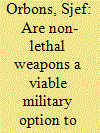

|
|
|
|
|
| Publication |
2012.
|
| Summary/Abstract |
Commanders of the International Security Assistance Force (ISAF) have repeatedly stressed the hearts and minds approach in Afghanistan, in saying that the human terrain is decisive for a successful outcome of the mission. Avoidance of civilian casualties is considered of strategic importance, and by nature highly dependent on the management of tactical level Escalation of Force (EoF) situations. Non-lethal weapons (NLWs) are expected to enable tactical commanders to avoid innocent civilian casualties in such situations. This article considers a selected NLW on its potential to accomplish this requirement. It uses a defence technology assessment approach to analyse EoF situations experienced by Dutch ISAF forces in which the NLW is inserted. The analysis demonstrates that a range of contextual factors in the Afghanistan high-risk environment tend to narrow down the window of opportunity for the NLW to help defuse the risk of unintended civil casualties.
|
|
|
|
|
|
|
|
|
|
|
|
|
|
|
|
| 3 |
ID:
152722


|
|
|
|
|
| Summary/Abstract |
How significant is gender in explaining US public opinion regarding civilian casualties inflicted by the US military during combat and counterterror operations? For answers, we test experimental treatment models on original data obtained from pre-election and post-election surveys conducted as part of the 2014 Cooperative Congressional Election Study. Our evidence supports prior claims that women support military action more reluctantly than men, but, much like men, condition their positions on the accompanying human costs. We find, nonetheless, that women are less likely to support attacks that might bring high numbers of civilian deaths, and, unlike men, base their support on the potential gains from an attack. Indeed, we conclude that differences in support for military action between men and women stem more from the perceived benefits of the attacks than from human costs.
|
|
|
|
|
|
|
|
|
|
|
|
|
|
|
|
| 4 |
ID:
142492


|
|
|
|
|
| Summary/Abstract |
In 2006, the Mexican government launched an aggressive campaign to weaken drug-trafficking organizations (DTOs). The security policies differed significantly from those of previous administrations in the use of a leadership strategy (the targeting for arrest of the highest levels or core leadership of criminal networks). While these strategies can play an important role in disrupting the targeted criminal organization, they can also have unintended consequences, increasing inter-cartel and intra-cartel fighting and fragmenting criminal organizations. What impact do captures of senior drug cartel members have on the dynamics of drug-related violence? Does it matter if governments target drug kingpins versus lower-ranked lieutenants? We analyze whether the captures or killings of kingpins and lieutenants have increased drug-related violence and whether the violence spills over spatially. To estimate effects that are credibly causal, we use different empirical strategies that combine difference-in-differences and synthetic control group methods. We find evidence that captures or killings of drug cartel leaders have exacerbating effects not only on DTO-related violence but also on homicides that affect the general population. Captures or killings of lieutenants, for their part, only seem to exacerbate violence in “strategic places” or municipalities located in the transportation network. While most of the effects on DTO-related violence are found in the first six months after a leader’s removal, effects on homicides affecting the rest of the population are more enduring, suggesting different mechanisms through which leadership neutralizations breed violence.
|
|
|
|
|
|
|
|
|
|
|
|
|
|
|
|
| 5 |
ID:
187148
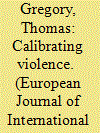

|
|
|
|
|
| Summary/Abstract |
This article examines how coalition forces sought to weaponise the counting of civilian casualties in Afghanistan between 2008 and 2014. Drawing on interviews with senior coalition officials, recently declassified documents, and coalition data on civilian harm, it will explain how these figures were used to calibrate the violence inflicted on the Afghan people, ensuring that commanders applied sufficient force to achieve their objectives without causing unnecessary harm to civilians and jeopardising the success of military operations. The article examines the formation of the Civilian Casualty Tracking Cell (CCTC), which was created by General David McKiernan in 2008. It also traces the formation of the Civilian Casualty Mitigation Team (CCMT), which was established by General John Allen in 2011. Furthermore, it explores how this data was deployed by coalition officials to minimise civilian harm where possible and to rationalise this harm where necessary. Rather than simply documenting the death and destruction, these counts were complicit in the violence experienced by Afghan civilians, helping to enable and enhance the effectiveness of military operations. As such, I argue that these counts failed to contest the violence of war or the continued dehumanisation of Afghan civilians.
|
|
|
|
|
|
|
|
|
|
|
|
|
|
|
|
| 6 |
ID:
167381
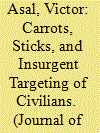

|
|
|
|
|
| Summary/Abstract |
How do conciliatory and coercive counterinsurgency tactics affect militant group violence against civilians? Scholars of civil war increasingly seek to understand intentional civilian targeting, often referred to as terrorism. Extant research emphasizes group weakness, or general state attributes such as regime type. We focus on terrorism as violent communication and as a response to government actions. State tactics toward groups, carrots and sticks, should be important for explaining insurgent terror. We test the argument using new data on terrorism by insurgent groups, with many time-varying variables, covering 1998 through 2012. Results suggest government coercion against a group is associated with subsequent terrorism by that group. However, this is only the case for larger insurgent groups, which raises questions about the notion of terrorism as a weapon of the weak. Carrots are often negatively related to group terrorism. Other factors associated with insurgent terrorism include holding territory, ethnic motivation, and social service provision.
|
|
|
|
|
|
|
|
|
|
|
|
|
|
|
|
| 7 |
ID:
169324
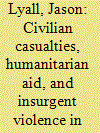

|
|
|
|
|
| Summary/Abstract |
Indiscriminate violence against civilians has long been viewed as a catalyst for new rounds of violence in civil wars. Can humanitarian assistance reduce violence after civilians have been harmed? Crossnational studies are pessimistic, drawing a connection between humanitarian aid and increased civil war violence, lethality, and duration. To date, however, we have few subnational studies of wartime aid and subsequent violence. To examine this relationship, I draw on the Afghan Civilian Assistance Program (ACAP II), a USAID-funded initiative that investigated 1,061 civilian casualty incidents (2011–13). Aid was assigned as if randomly to about half (55.8%) of these incidents, facilitating counterfactual estimation of how assistance affected Taliban attacks against the International Security Assistance Force, Afghan forces, and civilians. Challenging prior studies, I find that ACAP was associated with an average 23 percent reduction in attacks against ISAF, but not Afghan forces or civilians, at the village level for up to two years after the initial incident.
|
|
|
|
|
|
|
|
|
|
|
|
|
|
|
|
| 8 |
ID:
144296
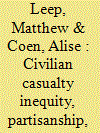

|
|
|
|
|
| Summary/Abstract |
Research into how civilian casualties influence public opinion largely focuses on citizens' support for the use of force by their own countries. This study explores how civilian casualties and partisan cues shape support for the use of force by an ally in a foreign conflict. Specifically, it assesses the effects of civilian casualty inequity – the uneven distribution of civilian casualties across two sides in a conflict – on Americans' support for Israel. Drawing on an original survey experiment conducted during the 2014 Israel–Gaza conflict, the article bridges work on inequity aversion theory, party identification, and social identity theory. It finds that civilian casualty inequity information reduces support for Israel, particularly among Independents. The study also finds that adding explicit partisan criticism cues to civilian casualty inequity information does not appear to induce motivated evaluations of Israel among Republicans or Democrats. An important implication is that under conditions of greater media coverage of civilian casualty inequity, Americans – particularly Independents – might become less supportive of Israel even in the absence of elite criticism of Israel.
|
|
|
|
|
|
|
|
|
|
|
|
|
|
|
|
| 9 |
ID:
186328


|
|
|
|
|
| Summary/Abstract |
Violence against civilians in civil war is widely thought of as a strategic choice by combatant groups. We argue that a common strategic logic of competition underlies diverse theories of civilian victimization. We develop a theory of strategic complements in victimization, hypothesizing that an armed group’s propensity to victimize civilians will increase with its expectation that its competitors will act likewise. We test this argument by structurally estimating a formal model of strategic interdependence between armed groups using data from the Colombian civil war. Our findings indicate that strategic expectations are responsible for a substantial amount of violence against civilians: the two major combatant groups would have systematically victimized civilians in at least 9% fewer municipalities if they had expected no violence by their rival. Examining causal mechanisms, we also find that victimization in the Colombian case was more likely aimed at controlling civilians than at influencing peace negotiations.
|
|
|
|
|
|
|
|
|
|
|
|
|
|
|
|
| 10 |
ID:
164161
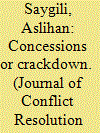

|
|
|
|
|
| Summary/Abstract |
A prominent view in the terrorism literature is that democracies make soft targets for terrorists due to their citizenry’s low tolerance for civilian casualties. This study tests this claim in the context of hostage taking terrorism, which is a unique form of violence that coerces the target state into negotiating over its citizens’ lives under public scrutiny. I argue that democratic accountability generates softer responses to hostage crises only in mature democracies, where leaders’ concern over being held accountable for the human costs of a no-concessions policy outweighs the reputational costs of conceding to terrorists’ demands. Using data on government responses to hostage incidents from 1978 to 2005, I find that regime type becomes a significant predictor of target concessions only at higher levels of regime stability. To test the accountability mechanism proposed by theory, I examine the effect of electoral cycles on target response; as expected, while nearing elections soften democratic responses to hostage crises, in general their positive effect on the likelihood of concessions is stronger in consolidated democracies.
|
|
|
|
|
|
|
|
|
|
|
|
|
|
|
|
| 11 |
ID:
172430
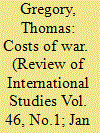

|
|
|
|
|
| Summary/Abstract |
Coalition forces have spent upwards of $50 million on condolence payments to Afghan and Iraqi civilians. These condolence payments were intended as an expression of sympathy rather than an admission of fault, and the programme itself has been criticised for the arbitrary, inconsistent, and low valuation of civilian lives. Rather than focus on the practical problems associated with condolence payments or normative arguments about whether belligerents ought to compensate those harmed, this article will trace the strategic imperatives that underpinned this programme and shaped its development. As coalition forces began to recognise the strategic costs of civilian casualties, they used a variety of tactics to mitigate the effects of civilian casualties on the success of military operations. This article will argue that condolence payments should not be seen as a humanitarian gesture designed to recognise and respond to the suffering of ordinary civilians, but will argue that condolence payments should be viewed as a weapons system aimed at securing specific military goals. As such, this article will argue that condolence payments continued to objectify and devalue the lives of Afghans and Iraqis by treating them as a means to an end rather than an end in themselves.
|
|
|
|
|
|
|
|
|
|
|
|
|
|
|
|
| 12 |
ID:
167377
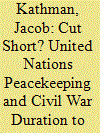

|
|
|
|
|
| Summary/Abstract |
While much literature on peacekeeping seeks to determine the effect of United Nations (UN) intervention on post-conflict peace processes, most peacekeeping operations (PKOs) are deployed to active conflicts. The limited research on peacekeeping in active civil conflicts suggests that robust PKOs reduce hostilities. Yet, if PKOs serve to extend conflict duration, even lowered hostilities can yield greater destruction over time. We thus explore the effect of peacekeeping on conflict duration. We argue that PKOs with larger troop deployments are better able to increase the cost of combat, improve information sharing between belligerents, and provide security guarantees, thus reducing the time to negotiated resolutions. Using fine-grained data on monthly peacekeeping personnel commitments and observations of ongoing conflict between combatants, we examine how variations in mission deployments affect the success of UN peacekeeping in ending civil conflicts. As expected, our findings indicate that larger troop deployments shorten war duration to negotiated resolution.
|
|
|
|
|
|
|
|
|
|
|
|
|
|
|
|
| 13 |
ID:
116103
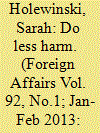

|
|
|
|
|
| Publication |
2013.
|
| Summary/Abstract |
Everyone knows that civilians suffer in war. Even in lawfully conducted conflicts waged for legitimate causes, they lose lives, limbs, and loved ones. What fewer understand is that there are no laws that oblige warring parties to help the civilians they've harmed, as long as the action that caused the harm is considered legal. A fighter jet can strike a weapons cache next to a home, a guard can shoot a suspicious biker at a checkpoint, and a convoy can speed through a playground, but so long as in each instance the armed forces follow the Geneva Conventions' rules of discrimination and proportionality, they never have to explain, apologize, or pay for those losses.
|
|
|
|
|
|
|
|
|
|
|
|
|
|
|
|
| 14 |
ID:
155783
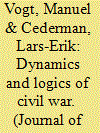

|
|
|
|
|
| Summary/Abstract |
This article reviews the literature on civil war. We focus on the most recent period of scholarly activity, beginning in the early 2000s when the publication of prominent quantitative studies triggered a surge in the empirical research of civil war as a well-defined conceptual category. We identify three explanatory logics that have dominated much of this literature and that view civil wars as a consequence of greed, grievances, and opportunities, respectively. We evaluate the arguments and findings of these theoretical approaches with respect to each of the main phases of war: outbreak, wartime dynamics, conflict termination, and postwar recovery. The article concludes by identifying key challenges confronting future civil war research. In particular, we emphasize the continuing need to advance theories that bridge the main explanatory logics as well as the different phases of conflict. Researchers should also pay more attention to defining the appropriate spatiotemporal scope of their studies.
|
|
|
|
|
|
|
|
|
|
|
|
|
|
|
|
| 15 |
ID:
180671
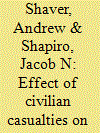

|
|
|
|
|
| Summary/Abstract |
Scholars of civil war and insurgency have long posited that insurgent organizations and their state enemies incur costs for the collateral damage they cause. We provide the first direct quantitative evidence that wartime informing to counterinsurgent forces is affected by civilian victimization. Using newly declassified data on tip flow to Coalition forces in Iraq we find that information flow goes down after government forces inadvertently kill civilians and it goes up when insurgents do so. These results confirm a relationship long posited in the theoretical literature on insurgency but never directly observed, have strong policy implications, and are consistent with a broad range of circumstantial evidence on the topic.
|
|
|
|
|
|
|
|
|
|
|
|
|
|
|
|
| 16 |
ID:
175667
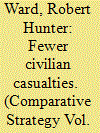

|
|
|
|
|
| Summary/Abstract |
In response to World War II's immense collateral damage from airpower, the United States implemented laws, policies, strategies, and technologies to protect civilians during war. When advanced technology began to promise pilot safety and precision, the public’s intolerance of military casualties transferred to an intolerance of foreign civilian casualties as well. As the military creates more collateral-damage safeguards, Americans grow more averse to operations endangering foreign civilians. Consequently, policymakers have less freedom to use force as needed, introducing a constraint on the use of force. As activity in cyberspace amplifies and space becomes a warfighting domain, increased “risk-free” warfare presents a heightened danger that this constraint will jeopardize national security.
|
|
|
|
|
|
|
|
|
|
|
|
|
|
|
|
| 17 |
ID:
172326


|
|
|
|
|
| Summary/Abstract |
Recent research into the public’s attitude toward the use of nuclear weapons repeats long-standing mistakes in how international relations theorists think about morality. Falsely equating consequentialism with state egoism and normative obligations with restrictions on the use of weapons of mass destruction implies that ethically motivated beliefs about foreign affairs must be other-regarding and that other-regarding behavior is not utilitarian in character. Drawing on empirical research into moral psychology, we argue that liberal, other-regarding morality is only one kind of ethical foundation. Alternative moral concerns such as retribution, deference to authority, and in-group loyalty also help to determine foreign policy beliefs. We find that all three are associated with support for the use of nuclear weapons in the American public. Our survey respondents act as moral utilitarians who weigh different ethical considerations in forming their judgments.
|
|
|
|
|
|
|
|
|
|
|
|
|
|
|
|
| 18 |
ID:
165316
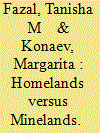

|
|
|
|
|
| Summary/Abstract |
Why do some armed groups commit to abide by the laws of war governing belligerent conduct during armed conflict, while others do not? We examine why only half the armed groups approached by the nongovernmental organization Geneva Call have signed a public Deed of Commitment banning the use of antipersonnel land mines. In contrast to recent studies that have tended to focus on the legitimacy concerns of armed groups, we argue that political objectives combine with military utility calculations to shape the behavior of armed groups in the realm of international humanitarian law. Utilizing original data on the ninety armed groups engaged by Geneva Call since 2000, we find that strong secessionist groups are most likely to sign the Deed of Commitment. Our findings have important implications for theories of international law, the study of civil wars, and on the ground efforts to mitigate the human costs of war.
|
|
|
|
|
|
|
|
|
|
|
|
|
|
|
|
| 19 |
ID:
184650
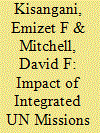

|
|
|
|
|
| Summary/Abstract |
Since the end of the Cold War, the UN has extended many of its missions in conflict zones to include political, military, and humanitarian activities. Many humanitarian nongovernmental organizations have been critical of these “integrated” UN missions, claiming that they can blur the distinction between political, military, and humanitarian action, thus placing humanitarian aid workers at risk of retaliation from warring factions opposed to the UN’s political objectives. This proposition is empirically tested using generalized methods of moments statistical analysis of sixty-seven countries that experienced intrastate conflict between 1997 and 2018. When assessing attacks in general—to include the sum of aid workers killed, wounded, and kidnapped—the results indicate that humanitarian aid workers are more likely to come under attack in countries that have an integrated UN mission. However, when the attacks are assessed separately, results show that this relationship holds only with aid workers who are killed in the field.
|
|
|
|
|
|
|
|
|
|
|
|
|
|
|
|
| 20 |
ID:
185674
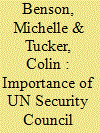

|
|
|
|
|
| Summary/Abstract |
The influence of United Nations (UN) peacekeeping in civil conflict has received important consideration in a growing body of literature. Little research, however, has focused on UN Security Council (UNSC) resolutions and their ability to determine and affect peacekeeping. New data on UNSC resolutions coded to UCDP/PRIO internal conflicts with peacekeeping operations (PKOs) is presented here. The data illustrate that resolutions vary importantly across conflicts and missions regarding their timing, sentiment toward rebel and government factions, level of action, mandates, authorized force levels, and substantive policies. Through a series of negative-binomial regressions using conflict-month replication data, we demonstrate that PKOs with both higher troops levels and a higher intensity of resolutions that condemn rebel actors experience a significant reduction one-sided rebel violence against civilians. In short, UNSC resolutions differ importantly before and during peacekeeping operations and may have an important impact on PKO effectiveness in civil conflict.
|
|
|
|
|
|
|
|
|
|
|
|
|
|
|
|
|
|
|
|
|